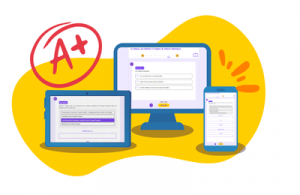The great famine in Ireland- Terminale- Anglais
- Fiche de cours
- Quiz et exercices
- Vidéos et podcasts
Découvrir un épisode crucial de l'histoire contemporaine de l'Irlande.
- Sous le joug anglais depuis de nombreux siècles, la domination de l'Irlande par la couronne britannique est entérinée par l'Union Act en 1800.
- S'ensuivent l'apparition de troubles politiques, notamment pour raisons politiques (les Irlandais sont à majorité catholique, alors qu'en Angleterre domine le protestantisme).
- L'activité de l'Irlande est tournée autour de l'agriculture. Les paysans irlandais cultivent presque exclusivement la pomme de terre pour le compte de grands propriétaires terriens anglais ou écossais.
- La pomme de terre était destinée à l'exportation vers l'Angleterre, mais constituait également la base de l'alimentation des paysans.
- En 1846, les graines plantées pourrissent, entraînant une famine catastrophique qui dura jusqu'en 1850, provoquant la mort d'1,5 millions d'Irlandais, et l'émigration d'autant d'entre eux vers les Etats-Unis.
- Le ressentiment du peuple irlandais contre l'inaction du pouvoir anglais pendant cet épisode a contribué à la naissance des actions de rébellion pour l'indépendance de l'Irlande.
In 1541, Henry VIII, the king of England, directly claimed the throne of Ireland. From then on, the land of Ireland was gradually taken over by English and Scottish settlers who obeyed the orders of the English kings.The Irish peasants often tried to rebel against their English landowners but they couldn't shake the yoke of their invaders.
English domination was completed in 1800
when the English Parliament voted the Union Act
which made Ireland part of the United Kingdom.
Political unrest then began in Ireland.
The situation was made worse by the fact that the
Irish were mostly Catholics, whereas the
English were Protestants.
The landlords were English, or Scottish, and they didn't live on their Irish estates. They became known as "the absentee landlords": they lived far away and had very little contact with their tenants in Ireland.
The main crop in Ireland was the potato. It was the staple diet of the Irish peasants, and it also provided food for the rest of the United Kingdom.
In 1846, however, the potato crop failed,
and the seeds went rotten. The potato blight
went on for four years. There was very little
food in Ireland, and the British government of Lord
Russell, under Queen Victoria, didn't do anything to
help relieve the famine.
Between 1846 and 1850, one
and a half million Irish people died of
starvation.
Another one and a half million left Ireland
forever. They emigrated mostly to the United
States of America.
The population of Ireland fell from about 8 million people in 1845 to under 5 million by 1850. It still hasn't returned to its 1845 level today.
Irish Catholics began to organize for rebellion. Irish people who had emigrated to the USA never forgot their origins and why they had to leave their homeland.
In 1858, O'Mahoney founded the Fenian Brotherhood in the USA. They began to organize support for rebellion, mostly in terms of money and arms supply.
It marked the beginning of terrorist actions for the independence of Ireland.

Des quiz et exercices pour mieux assimiler sa leçon
La plateforme de soutien scolaire en ligne myMaxicours propose des quiz et exercices en accompagnement de chaque fiche de cours. Les exercices permettent de vérifier si la leçon est bien comprise ou s’il reste encore des notions à revoir.

Des exercices variés pour ne pas s’ennuyer
Les exercices se déclinent sous toutes leurs formes sur myMaxicours ! Selon la matière et la classe étudiées, retrouvez des dictées, des mots à relier ou encore des phrases à compléter, mais aussi des textes à trous et bien d’autres formats !
Dans les classes de primaire, l’accent est mis sur des exercices illustrés très ludiques pour motiver les plus jeunes.

Des quiz pour une évaluation en direct
Les quiz et exercices permettent d’avoir un retour immédiat sur la bonne compréhension du cours. Une fois toutes les réponses communiquées, le résultat s’affiche à l’écran et permet à l’élève de se situer immédiatement.
myMaxicours offre des solutions efficaces de révision grâce aux fiches de cours et aux exercices associés. L’élève se rassure pour le prochain examen en testant ses connaissances au préalable.

Des vidéos et des podcasts pour apprendre différemment
Certains élèves ont une mémoire visuelle quand d’autres ont plutôt une mémoire auditive. myMaxicours s’adapte à tous les enfants et adolescents pour leur proposer un apprentissage serein et efficace.
Découvrez de nombreuses vidéos et podcasts en complément des fiches de cours et des exercices pour une année scolaire au top !

Des podcasts pour les révisions
La plateforme de soutien scolaire en ligne myMaxicours propose des podcasts de révision pour toutes les classes à examen : troisième, première et terminale.
Les ados peuvent écouter les différents cours afin de mieux les mémoriser en préparation de leurs examens. Des fiches de cours de différentes matières sont disponibles en podcasts ainsi qu’une préparation au grand oral avec de nombreux conseils pratiques.

Des vidéos de cours pour comprendre en image
Des vidéos de cours illustrent les notions principales à retenir et complètent les fiches de cours. De quoi réviser sa prochaine évaluation ou son prochain examen en toute confiance !









